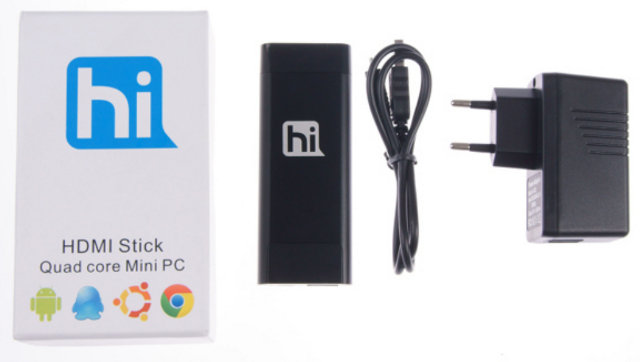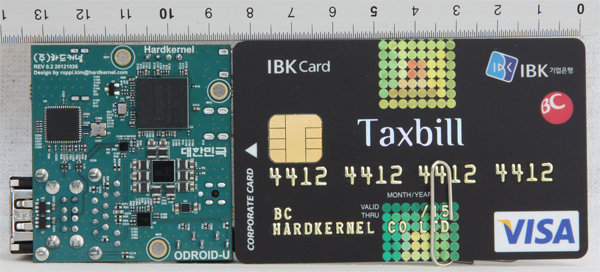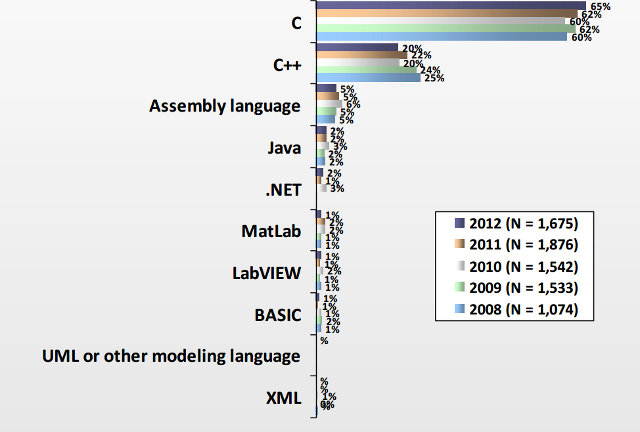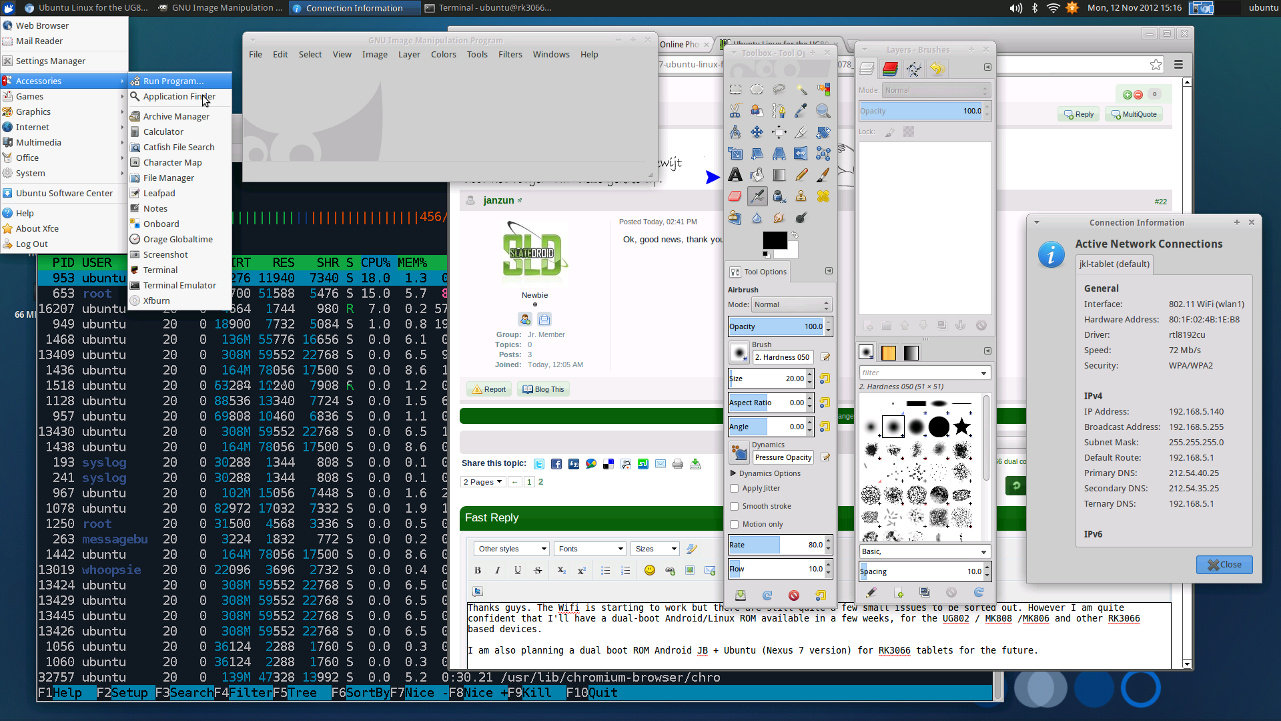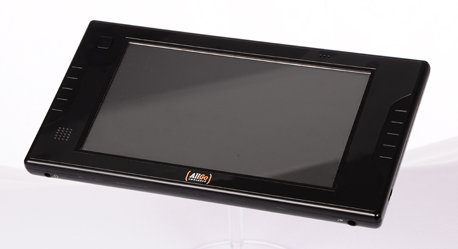After many delays allegedly due to Freescale i.MX6 CPU delivery issues, Hiapad HI-802 mini PC appears to be now available for purchase on Aliexpress for $99 including shipping. This HDMI dongle features Freescale i.MX6 Quad, 1GB RAM and 8GB Flash. The specs on Aliexpress are similar to the original announcement, except the internal NAND flash size is 8GB instead of 16GB: SoC – Freescale i.MX6 Quad Core Cortex A9 @ 1.2GHz with Vivante GC2000 System Memory – 1GB DDR3 RAM Storage – 8GB Nand Flash + microSD card socket Connectivity 802.11b/g/n Build-in Bluetooth 2.1 No 3G support. Video Output – HDMI (Up to 1080p60) Video Container Formats – 3GP,MPEG4,AVI,RMVB,MKV,FLV etc. support 1080P HD Resolution Audio Formats – MP3/WAV/AMR/AAC; USB – Micro USB 2.0 OTG + USB 2.0 Host Power Supply – 5V/1.5A Dimensions – 102 x 38 x 10 mm Weight – 45 g This Android 4.0 (ICS) mini PC […]
$69 ODROID-U & $89 ODROID-U2 Exynos 4412 Development Boards
Hardkernel has just announced 2 tiny quad core development boards based on Exynos 4412 @ 1.4 GHz (as used in Samsung Galaxy S3) and Exynos 4412 Prime @ 1.7 GHz (as used in Samsung Galaxy Note 2) called respectively ODROID-U and ODROID-U2. The other difference is the U version comes with 1 GB RAM, and the U2 version with 2 GB RAM. Here are the specification the ODROID-U and ODROID-U2 boards: Processor – Samsung Exynos4412 @ 1.4 GHz (ODROID-U) or Exynos 4412 Prime @ 1.7 Ghz (ODROID-U2), which can be overclocked respectively to 1.8 GHz and 2 GHz. GPU – Mali-400 clocked at 400MHz (ODROID-U) or 440MHz (ODROID-U2), which can be overclocked respectively to 533 and 633 MHz. System Memory – 1GB LPDDR2 DRAM @ 800MHz (ODROID-U) or 2GB @ 880MHz (ODROID-U2) Storage – microSD socket, eMMC connector USB – 2x USB 2.0 Host ports, 1x USB 2.0 device for ADB/mass […]
Linaro 12.11 Release with Linux Kernel 3.7 and Android 4.2
Linaro release 12.11 has just been announced, and includes Linux Kernel 3.7-rc2 and Android 4.2. The tracking version (stable release) uses Kernel 3.4.19. This release upgrade Android to version 4.2, adds support for Origen 4 Quad board, and you can now use perf profiling utility in Linaro Android. Initial GRUB support for ARM is now available, the Ubuntu Precise server image is back online and lots of updates have been done on the kernel, mainly for Android, device tree and big.LITTLE. Here are the highlights of the release: Android Platform Enablement Android upgraded from 4.1.2 to 4.2 to all the platforms Android builds are available for Origen 4412 board setup Improvements to click-through license infrastructure MP3 playback enabled for ARM Versatile Express and Samsung Origen (4210 and 4412) Fixed riff USB issue on newer laptops Testing/LAVA Re-enabled Android CTS testing Integrated the new Methanol browser test Upstreaming Perf patch was […]
2012 Embedded Market Study – Software Development & Processors
I’ve just come across an Embedded System Study by UBM published in April 2012. The company surveyed over 1,700 professionals working on embedded systems who are mainly based in the US (56%), but also in Europe (21%) and Asia (12%). The report is 87 long, but I found some of the slides are particularly interesting in regards to programming languages, operating systems and software life cycle, as well as processor/micro-controller choices. Unsurprisingly C (65%), C++ (20%) and assembler (5%) are still the main languages used for embedded software development. In this report, we also learn that the average team is composed of 14.5 members including 5.6 software engineers, 5.6 hardware engineers and 3.3 firmware engineers. 2012 was the first year they included QA Engineers and system integrators both with 2.6 members on average working on projects lasting from less than 6 months to over 25 months. UBM survey also provides a […]
Freescale i.MX6 Resources: Development Boards, Documentation, Source Code and Tools
Reader “Mark” recently left a comment saying the NDA on Freescale i.MX6 resources was lifted and documentation and source code were now available for the platform. So it’s time for me to look into it, and provide an overview of Freescale i.MX6 features, list available development platforms, and have a closer look at the documentation, source code and tools for the platform. Freescale i.MX6 Processors In 2011, Freescale initially announced 3 processors in the i.MX6 series for consumer, industrial and automotive markets, but added 2 lite SoC in 2012, and there are now 5 members in the family: Freescale i.MX6SoloLite – Single Cortex A9 processor up to 1 GHz with 256KB L2 Cache, 32-bit DDR3 and LPDDR2 memory support, and 2D graphics accelerator (Vivante GC355 + GC320) Freescale i.MX6Solo – Single Cortex A9 core up to 1 GHz with 512KB L2 Cache, 32-bit DDR3 and LPDDR2 memory support, and 2D & […]
Preliminary Version of Ubuntu Running on UG802 mini PC (Rockchip RK3066)
Last week, I wrote a post entitled “Rockchip RK3066/RK30xx Processors Documentation, Source Code and Tools“, where I explained that the kernel source code for RK3066 was released and somebody (AndrewDB) had started working on a port of Ubuntu for the platform. It appears he has been pretty busy, as there has been some progress in the meantime… AndrewDB managed to run Ubuntu on UG802 HDMI Stick. Wifi is starting to work, although there are still some minor issues to resolve. He plans to have a dual-boot Android/Linux ROM available in several weeks for RK3066 based devices such as the UG802 and MK808. Eventually, AndrewDB also intends to release a dual boot ROM Android Jelly Bean + Ubuntu for RK3066 tablets. That’s all the information I have for now. This is still work in progress (See TODO List) and no binary has been released yet. Via: SlateDroid Jean-Luc Aufranc (CNXSoft)Jean-Luc started […]
TI and AllGo Embedded Launch E-Tab Tablet Reference Design Powered by TI AM3354 Processor
Texas Instruments and Allgo Embedded jointly announced the availability of E-Tab, a tablet reference design based on Cortex A8 Sitara AM3354 processor that targets the healthcare, logistics, retail and education markets as well as hotels and restaurants. Here are the tablet reference designs specifications: Processor – TI’s AM3354 ARM Cortex-A8 microprocessor (up to 1 GHz) Operating System – Android ICS 4.0 System Memory – 512 MB DDR3 RAM Storage – 512 MB Nand Flash and 4GB Micro SD card Display – 7″ WVGA TFT LCD with 5-Touch Capacitive Touch panel Audio – Stereo Headphone, Internal MIC and Internal Mono Speaker Connectivity: WiFi 802.11 b/g/n + BT 2.1 Module Bluetooth 2.1 + EDR Ethernet 10/100Mbps (Optional) Camera – Internal USB Camera Module (Optional) USB Interfaces – USB High Speed Host Port and USB OTG (ADB and Debug purpose) Key/Button – Single Button for Back and Home screen, Reset Switch and Power […]
Xibo Digital Signage Version 1.4.0 Released
Xibo has just announced the release of Xibo 1.4.0 (codename: “Brorsen”). Contrary to version 1.3.0 which was a development release, Xibo 1.4.0 is a stable release and you should consider updating your current installations if you want to take advantage of some of the 27 new features and/or 108 bug fixes. This version replaces the previous stable version (1.2.2) released 18 months ago. If you are not familiar with Xibo, it is an open source Client/Server digital signage framework that can run in Windows (.NET implementation) and Linux (Client: Python, Server: LAMP). For some more details, you can read my introduction to Xibo and/or a “getting started” tutorial I wrote some time ago. Main new features in Xibo 1.4.0 Significant improvements to permissions – View, Edit and Delete permissions can now be set on the following items: Library Media Layouts Regions in Layouts Media on Region Timelines DataSets Display Groups […]


